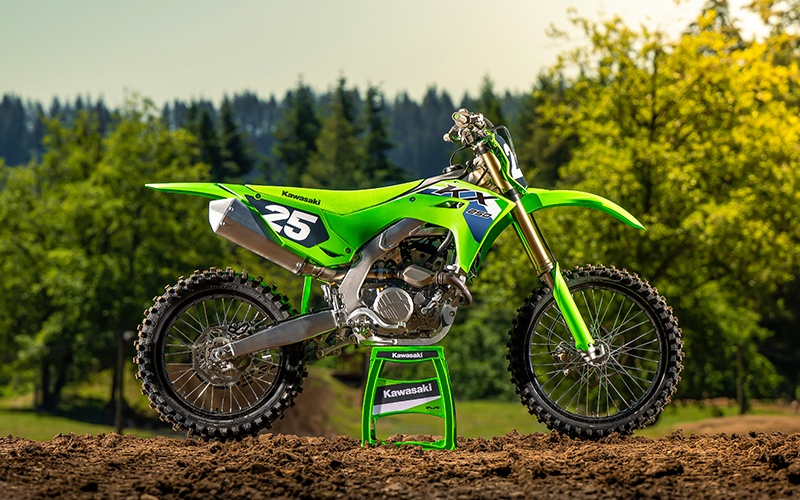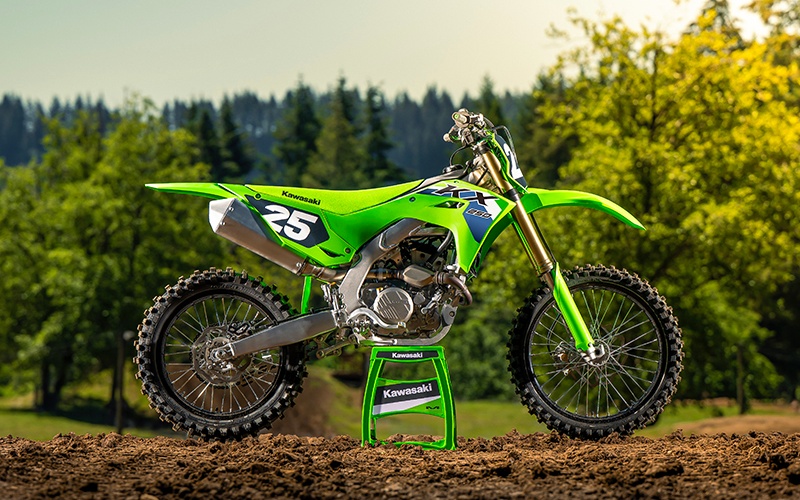
Jay Hatfield Motorsports - Why the 2026 Kawasaki KX™250’s Traction and Tuning Win Races Around Springdale, AR
Modern motocross rewards riders who can find grip where others can’t—and preserve that grip long enough to set consistent, fast laps. That’s why the 2026 Kawasaki KX™250’s traction management and tuning flexibility stand out for riders training and racing around Springdale, AR. The combination of Kawasaki Traction Control (KTRC), Launch Control Mode, and Power Modes, plus connectivity via RIDEOLOGY THE APP KX™, creates a seamless loop between what you feel on the track and what you can refine in the pits. It’s not just about peak output; it’s about delivering the right power, at the right time, to the right patch of dirt.
Start with the engine. The 249cc DOHC single uses Dual Injectors and a 44mm Keihin throttle body to feed a combustion package tuned for clean, immediate response. That precision pairs naturally with KTRC to minimize spin on slick exits, while Launch Control Mode gives you a decisive jump when the gate drops. Power Modes let you set a baseline—so when the track changes, your bike adapts. If your corners start to glaze, choose the setting that softens delivery initially and ramps predictably. If loam develops, pick the map that bites harder and rides the meat of the powerband. With RIDEOLOGY THE APP KX™, you gain insight into settings, service intervals, and ride data, making smarter decisions about gearing, damping, or fueling.
- Starts and first-lap pace: Launch Control Mode sharpens initial drive, while the hydraulic clutch helps maintain consistent engagement into Turn 1.
- Mid-moto composure: KTRC tames late-brake chop and slick exits, keeping the rear tire hooking up as the surface evolves.
- Adaptable delivery: Power Modes let you tailor throttle character to track temperature, soil type, and your riding style.
- Data-backed tuning: RIDEOLOGY THE APP KX™ supports smarter adjustments between sessions.
Suspension is the silent partner in traction. The 49mm Showa inverted fork with 16-way compression and rebound damping allows nuanced control over initial stroke and mid-stroke support—crucial for staying balanced through braking bumps and maintaining tire contact over acceleration chop. The Uni-Trak® rear adds dual-range compression (high/low), 22-way rebound, and adjustable preload, giving you a broad canvas to solve harshness, improve drive grip, and stabilize whoops. For many riders, a sag check and two clicks of rebound can be the difference between dancing across a rough section or getting pitched. Couple that with the stability of the aluminum perimeter frame, and the KX™250 communicates traction in a way that helps you push later and commit deeper.
Because your program doesn’t stop at the checkered flag, accessory support matters. The KX™ FI Calibration Kit (Handheld) helps you build tailored maps for different venues, while a Skid Plate Kit protects your investment when tracks get rocky. ODI LOCK-ON GRIPS maintain a positive bar feel late in motos, and the Optimate TM-471 Lithium Battery Charger .8A keeps your starts crisp. Each piece contributes to a consistent, trustworthy package that holds pace as conditions deteriorate. That’s how podiums are built: lap by lap, decision by decision.
Jay Hatfield Motorsports provides the guidance to make these tools count—serving Springdale, Rogers, and Bentonville, AR, with expertise that turns adjustments into results. Whether you’re learning to read a track surface or chasing tenths against the clock, our team helps you translate feedback into a plan you can execute on race day.
Frequently Asked Questions:
How should I choose between Power Modes on race day?
Start with the mode that matches the soil: use a smoother map for hardpack and a more aggressive map when traction is plentiful. Then make small changes after sight laps—if the rear breaks loose mid-corner, soften initial delivery; if it feels lazy on loam, pick a livelier map.
What’s the relationship between KTRC and suspension settings?
KTRC manages wheel spin electronically, but the suspension determines how consistently the tire follows the ground. If you’re relying too heavily on KTRC, try adding rebound support and adjusting compression to keep the rear planted under drive. Electronics and suspension should complement, not mask, each other.
Do I need the KX™ FI Calibration Kit (Handheld) if I already use RIDEOLOGY THE APP KX™?
Both are valuable. RIDEOLOGY THE APP KX™ supports smartphone connectivity and ride insights, while the KX™ FI Calibration Kit (Handheld) offers deeper, track-by-track fueling and ignition refinement that many racers prefer for tailoring power precisely to conditions.


